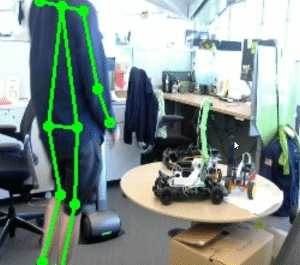AccSGD
This is the code associated with Accelerated SGD algorithm used in the paper On the insufficiency of existing momentum schemes for Stochastic Optimization, selected to appear at ICLR 2018.
Usage:
The code can be downloaded and placed in a given local directory. In a manner similar to using any usual optimizer from the pytorch toolkit, it is also possible to use the AccSGD optimizer with little effort. First, we require importing the optimizer through the following command:
from AccSGD import *
Next, an ASGD optimizer working with a given pytorch model can be invoked using the following command:
optimizer = AccSGD(model.parameters(), lr=0.1, kappa = 1000.0, xi = 10.0)
where, lr is the learning rate, kappa the long step parameter and xi is the statistical advantage parameter.
Guidelines on setting parameters/debugging:
The learning rate lr: lr is set in a manner similar to schemes such as vanilla Stochastic Gradient Descent (SGD)/Standard Momentum (Heavy Ball)/Nesterov's Acceleration. Note that lr is a function of batch size - a rigorous quantification of this phenomenon can be found in the following paper. Such a characterization has been observed in several empirical works.
Long Step kappa: As the networks grow deeper (e.g. with resnets) and when dealing with typically harder datasets such as CIFAR/ImageNet, employing kappa to be 10^4 or more helps. For shallow nets and easier datasets such as MNIST, a typical value of kappa can be set as 10^3 or even 10^2.
Statistical Advantage Parameter xi: xi lies between 1.0 and sqrt(kappa). When large batch sizes (nearly matching batch gradient descent) are used, it is advisable to use xi that is closer to sqrt(kappa). In general, as the batch size increases by a factor of k, increase xi by sqrt(k).
Effective ways to debug:
For Nets with ReLU/ELU type activations:
(--1--) Slower convergence: There are three reasons for this to happen:
- This could be a result of setting the learning rate too low (similar to SGD/vanilla momentum/Nesterov's acceleration).
- This could be as a result of setting
kappato be too high. - The other reason could be that
xihas been set to a small value and needs to be increased.
(--2--) Oscillatory behavior/Divergence: There are two reasons for this to happen:
- This could be a result of setting the learning rate to be too high (similar to SGD/vanilla momentum/Nesterov's acceleration).
- The other reason is that
xihas been set to a large value and needs to be decreased.
For nets with Sigmoid activations:
Slower convergence after an initial rapid decrease in error: This is a sign of an over aggressive setting of parameters and must be treated in a similar manner as the oscillatory/divergence behavior (--2--) encountered in the ReLU/ELU activation case.
Slow convergence right from the start: This is more likely related to slower convergence (--1--) encountered in the ReLU/ELU case.
Citation:
If AccSGD is used in your paper/experiments, please cite the following papers.
@inproceedings{Kidambi2018Insufficiency,
title={On the insufficiency of existing momentum schemes for Stochastic Optimization},
author={Kidambi, Rahul and Netrapalli, Praneeth and Jain, Prateek and Kakade, Sham},
booktitle={International Conference on Learning Representations},
year={2018}
}
@Article{Jain2017Accelerating,
title={Accelerating Stochastic Gradient Descent},
author={Jain, Prateek and Kakade, Sham and Kidambi, Rahul and Netrapalli, Praneeth and Sidford, Aaron},
journal={CoRR},
volume = {abs/1704.08227},
year={2017}
}



